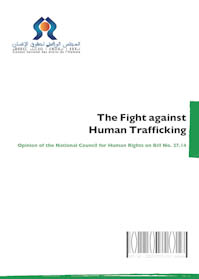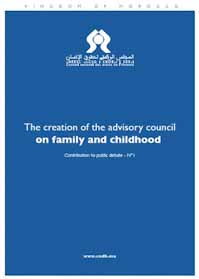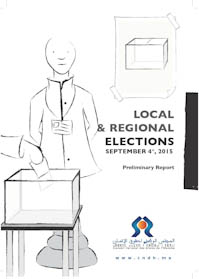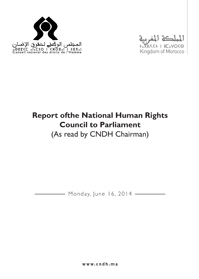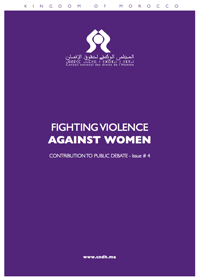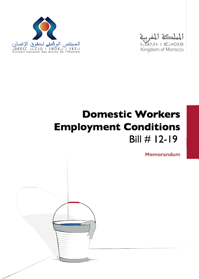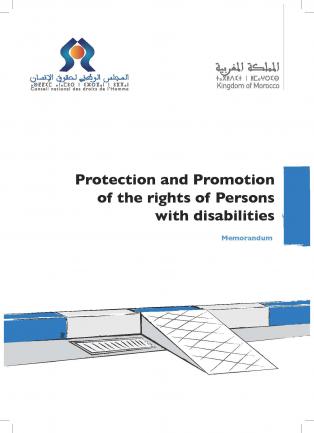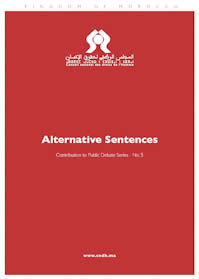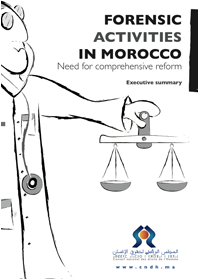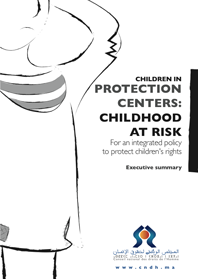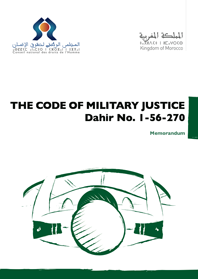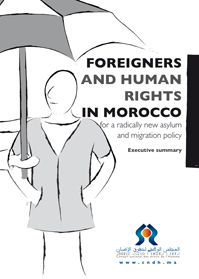Follow-up Report on the Implementation of Equity and Reconciliation Commission Recommendations
Main Report- December 2009The Advisory Council on Human Rights (CCDH), pursuant to the royal speech delivered at the end of the mandate of the Equity and Reconciliation Commission (IER) and the presentation of the report on “50 Years of Human Development in Morocco”, was tasked with following up the implementation of recommendations included in the IER Final Report. In that speech, His Majesty the King said, “I should like to commend the Equity and Reconciliation Commission, its president and its members, for their sincere endeavors, and I call on the Advisory Council on Human Rights to implement the Commission's recommendations. I also call on public authorities to continue their fruitful cooperation with the Council; by doing so, they will be reflecting my determination to promote the pursuit of truth, equity and reconciliation”.
In the Throne Speech, given on July 30, 2006, His Majesty the King reaffirmed this mission. “Accordingly, I accepted the publication of the Equity and Reconciliation Commission’s Final Report in order to boost the nation’s selfconfidence.
I entrusted the Advisory Council on Human Rights with monitoring
the implementation of the report’s recommendations, and asked the public authorities to facilitate that mission, each in their respective fields of competence, so that the rule of law may be enhanced and justice done”, His Majesty said.
As part of executing this mandate, the CCDH worked to follow-up the
implementation of the IER recommendations, by adopting a working method to define the areas subject to follow-up, the parties concerned and the means of implementation. As a result, the CCDH set up various multidisciplinary commissions, composed either of the CCDH members alone or including relevant government authorities and civil society actors.
The CCDH has previously elaborated a special follow-up report on the
implementation of IER recommendations, on the occasion of its 26th meeting on December 4, 2006, in which it listed the whole actions it carried out to implement the recommendations. This report seeks to outline, in a complete and thorough manner, all the achievements made so far, and includes appendixes on the details of these achievements.
The report has been drawn up in light of the Paris Principles and the role of the national institutions for the promotion and protection of human rights and the monitoring of human rights violations. It is based on the IER Final Report which, upon analysis of the events, facts and contexts associated with the gross human rights violations perpetrated in the past, recommended that constitutional, institutional and legal reforms should be made, and stressed the importance of monitoring the implementation of the recommendations and pursuing the investigation about the still unresolved cases of persons whose fate is unknown and the disappeared. The truth about these cases was not totally uncovered due to the limited period of the IER mandate, the complexity of some cases, or other objective impediments.
This report also falls within the framework of the implementation of the
comprehensive action plan that the CCDH Coordination Committee approved at its meeting of January 2006, which is generally related to the following missions of the CCDH:
● Missions that fall within the mandate of the CCDH and the programs of its working groups;
● Missions, as part of pursuing the IER action, particularly as regards
investigations and reparations;
● Missions that come under the follow-up of the IER recommendations on
the proposed structuring reforms, especially those linked to the CCDH
remit and prerogatives.
The Coordination Committee also decided to establish commissions to followup the implementation of the IER recommendations pertaining to the following issues:
● Individual reparation program;
● Continued truth-seeking investigation program;
● Community reparation program;
● Legal and institutional reforms.
This report aims to present the results of the work of these commissions. It also highlights the specificities of the follow-up action in the Moroccan transitional justice process, by determining the stakeholders or the parties involved, the areas where the recommendations are to be implemented, as well as the adopted
action plan and methodology, in addition to the results achieved. It includes special appendixes that provide detailed information and statistics.





